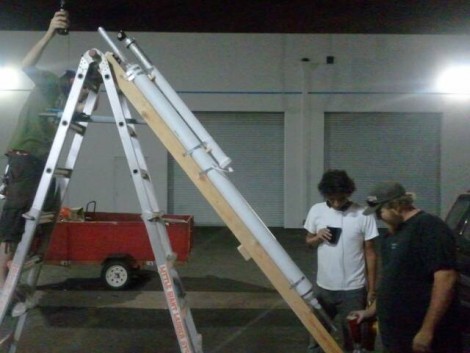
[Erik] wrote in letting us know that he just completed development of the Bobuino, a Arduino based on an ATmega1284. That chip is nice and beefy, most notably for having 16 KB of SRAM but it also boasts 4 KB of EEPROM, and 128 KB of program memory.
But the upgraded chip isn’t the only thing that it brings to the table. It’s easy to spot the on-board SD card slot in the image above. Also of note is the battery-backed DS1307 real time clock with a jumper that will route the square wave output to one of two pins on the microcontroller.
This design is compatible with standard Arduino shields thanks to the familiar pair of pin sockets, and can still be programmed via the USB socket. Since the AVR chip has more IO than normal there’s also pin headers to break out the PORTC pins, for a JTAG connector, and for an RS232 port.
















